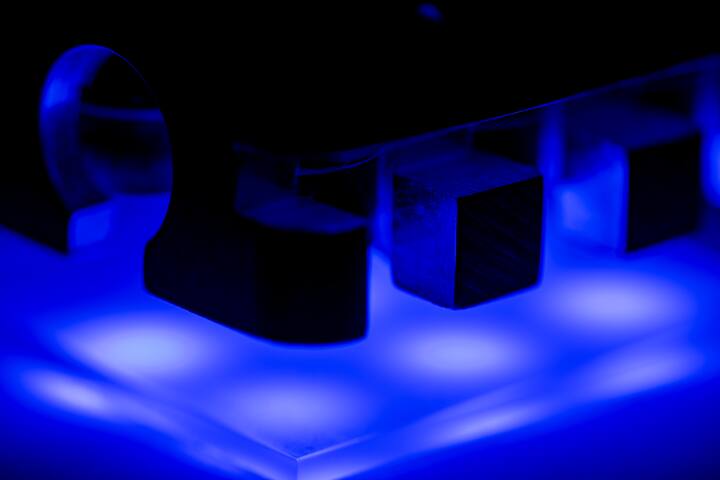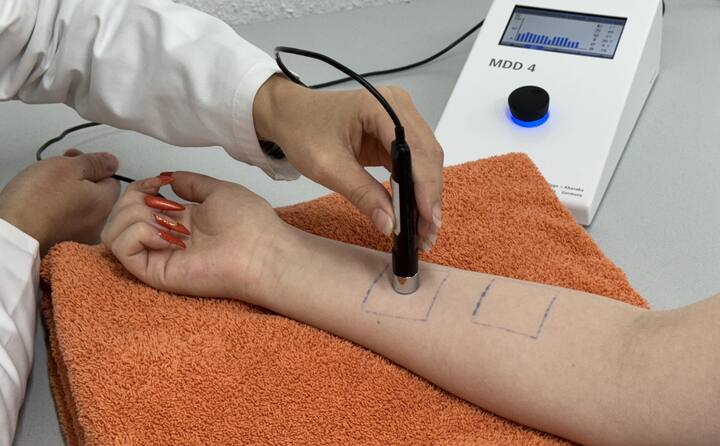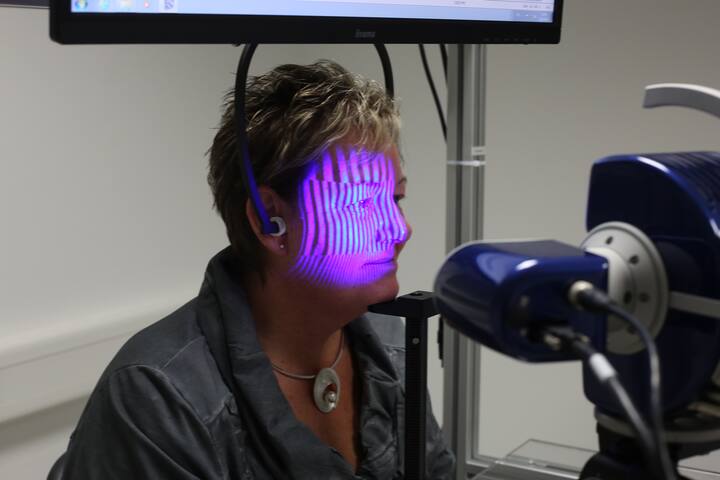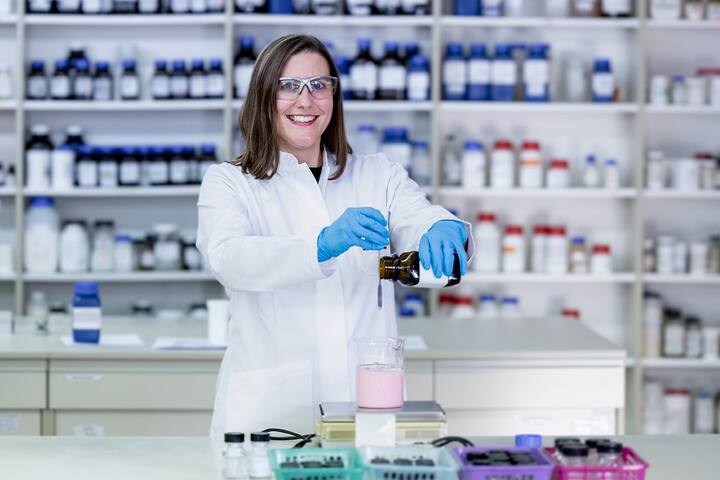
Creative Source of Pioneering Work in Skin and Hair Physiology
Research
For over 50 years, we have been at the forefront of developing and refining measurement methods that have set the standard in the cosmetics industry. Innovations such as our Corneometer and Sebumeter are now used internationally, providing reliable and scientifically grounded efficacy testing for cosmetic products.
Why choose Normec?
Expert assessments provided by our legally trained specialists.
Over 50 years of experience working with clients in complete confidentiality.
Our commitment to quality and expertise has made us a trusted partner worldwide.
Everything under one roof: interdisciplinary expertise in research, development, testing, and analysis.
In use almost everywhere in the world
Research at Normec has often been the starting point for development of new methods. The procedure is: first do research, then develop and test, and finally analyze.
Between the Sebumeter and ICL-S/H there lies not just 50 years of continuous, solid work but also 50 years of ideas and concepts for new skin and hair physiological measuring principles that today have matured worldwide Normec not only use cutting edge technologies but also are a constant source of new, practice-oriented methods and instruments for skin and hair physiological testing on volunteers and in laboratory.
Sebumeter / Corneometer
The Corneometer and Sebumeter devices developed by Normec for determining skin moisture and oil content are used worldwide.
Practicality and scientific relevance have prevailed until today. In 1980, both devices were handed over to the Schwarzhaupt company, then to Courage & Khazaka to ensure constant technical updating and optimization. Both devices, which are characterized by their simple and ingenious principle as a grease spot photometer and the measurement of dielectric constants, respectively, have become indispensable in cosmetic efficacy testing.
Degreasing and refatting effect – Sebumeter measurements
The protective barrier of the skin is a thin lipid film consisting of sebaceous gland lipids and water. The content of surface lipids, as well as the number of sebaceous glands, strongly depends on the skin region and ranges between 50 µg/cm² and 500 µg/cm². In the case of sebum overproduction, the skin appears greasy, which is cosmetically undesirable.
The determination of the sebum content of the skin is carried out with the Sebumeter® developed in our company. Optionally or in combination, the Sebutape® method is used.

FOITS - a Classic Device in Modern Efficacy Testing
FOITS (Fast Optical in vivo Topometry of Human Skin) is a non-contact 3D wrinkle analysis method. Developed since 1995 and introduced in 1997, it combines high-resolution imaging, blue LED illumination, and laser-assisted overlay for precise, user-friendly measurements.
Over 25 years, FOITS has become a global standard, with 40+ systems in use. It enables advanced parameters like FDD (depth-based efficacy analysis) and Area-Analysis for detailed wrinkle assessment. Studies with our Beijing partner revealed differences in Asian vs. Caucasian skin topography.
The next-generation FOITS-2 uses 2-SOFT (2-Shot-One-Face Technique) for full-face stereo imaging, allowing simultaneous multi-area wrinkle analysis.

Chemilumineszenz - Proof of Antioxidant Efficacy / ICL-S/H
Induced chemiluminescence of skin and hair (ICL-S/H) is one of the few methods available to demonstrate in vivo an oxidative protection potential. The chemiluminescence detection system was developed as part of a research project in collaboration with m.u.t. GmbH (Wedel, Germany) in the late 1990s. Conceived as an in vivo single photon counting system, the result was a technology that quantifies oxidative stress in the skin and hair by means of a Peltier-cooled photomultiplier.
Through spatial separation of the detection unit and control unit with sun simulator a non-invasive technique could be developed that detects photons emitted by the skin or hair less than 100 ms after stress termination and so makes it possible to obtain directly a cosmetic proof of efficacy of the oxidative protection potential.
The biggest challenge in terms of claim support is the non-invasive but at the same time sensitive measurement of oxidative stress on the test person. Only this in vivo approach takes into account all physiological processes active in living skin and provides efficacy data with the greatest possible relevance to the application situation. UV filters reduce radical formation and antioxidants cause faster and/or more effective radical neutralisation or detoxification. By measuring chemiluminescence (ultra-weak photon emission), as a concomitant of radical reactions in biological tissues such as the skin, the ICL-S method (Induced Chemiluminescence of Human Skin) allows the measurement of oxidative stress in real time in groups of test persons. The efficacy testing of antioxidants and UV filters can thus be carried out for raw materials during product development and for finished products after topical application (in-use situation), both on human skin and hair.
Anti-Dandruff – Objective Measurement of the Dandruff Status
An important goal of research at Normec is to develop objective test methods that verify, for example, data obtained subjectively. The huge advantage of objective test methods over subjective data collection is of course an exact quantification of results. As early as the 1980s, Institutes Dr. Schrader developed a method that allows image analysis and therefore quantitative visualization of the dandruff status of test subjects. With this method the dandruff on one half of the scalp is combed onto a prepared glass slide under standardized conditions. The dandruff is then measured by quantitative image analysis. Different image analysis algorithms are used to eliminate hair fibres and dust particles from the image and detect the dandruff by its greyscale value. This makes it possible to determine not only the amount of dandruff combed out but also its size. The measuring procedure has proved itself in practice over decades.Continuous improvement and optimization of image analysis assure we are always able to offer our customers a reliable method.Literatur
Schrader K, Domsch A. (2005). Testing of Anti-Dandruff Effect in Cosmetology – Theory and Practice. Research, Test Methods, Analysis, Formulas. Verlag für chemische Industrie Augsburg, Vol. I, 230-233.
Schrader K (1986). Comparative Experimental Research on Dandruff Through Quantitative Image Analysis. J Appl Cosmetol 4, 153-70.
Schrader K (1982). Wirkung und Nebenwirkung Moderner Antischuppenpräparate. SÖFW J 108(15), 471-4.
HDRS - Hybride Diffuse Reflektionsspektroskopie
Worldwide, in vivo SPF testing of sunscreens is based on methods like ISO 24444, the FDA Guideline, and the Australian Standard. These require UV irradiation to trigger an erythemal (reddening) skin reaction, allowing calculation of the minimum erythemal dose on untreated (MEDu) and treated skin (MEDp). So far, no reliable in vitro alternative using synthetic skin substrates exists.
The innovative HDRS method enables SPF measurement in vivo without inducing erythema, offering a more ethical alternative. It combines in vivo diffuse reflectance spectroscopy (DRS) with in vitro UV-B transmission analysis using a roughened PMMA plate. This allows both skin interaction and UV-B absorption to be captured accurately.
To validate this approach, various sunscreens (SPF 5–120) and formulations were tested with HDRS and compared to ISO 24444 results. A strong correlation was observed, confirming the method's reliability. Additionally, HDRS can determine UVA-PF values, which correlate well with ISO 24443 results.
Since HDRS avoids all erythema-relevant UV exposure, no skin reaction occurs, and MED determination is no longer needed. This makes HDRS the first reliable and ethical alternative for both SPF and UVA-PF testing that accounts for how the product interacts with the skin—without compromising accuracy.

These services might also be of interest to you

Skin physiology

Analytics

Hair test
Leading company in this service

Normec Schrader Institute
Holzminden Germany